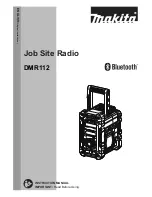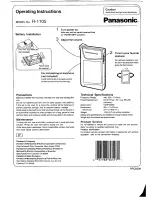
PRIMUS
R
660 Digital Weather Radar System
A28–1146–111
REV 2
A–11
Federal Aviation Administration (FAA) Advisory Circulars
TURBULENCE AND ECHO INTENSITY ON NWS RADAR
(WSR–57)
The frequency and severity of turbulence increases with radar
reflectivity, a measure of the intensity of echoes from storm targets at
a standard range. Derived gust velocities exceeding 2,100 feet per
minute (classified as severe turbulence) are commonly encountered in
level 3 storms. In level 2 storms, gusts of intensity between 1,200 and
2,100 feet per minute (classified as moderate turbulence) are
encountered approximately once for each 10 nautical miles of
thunderstorm flight.
TURBULENCE IN RELATION TO DISTANCE FROM STORM
CORE
NSSL data indicates that the frequency and severity of turbulence
encounters decrease slowly with distance from storm cores. Significantly,
the data indicates that within 20 miles from the center of severe storm
cores, moderate to severe turbulence is encountered at any altitude about
one–fifth as often as in the cores of Level 3 or greater thunderstorms.
Further, the data indicates that moderate turbulence is encountered at any
altitude up to 10 miles from the center of level 2 thunderstorms. SEVERE
TURBULENCE IS OFTEN FOUND IN TENUOUS ANVIL CLOUDS 15
TO 20 MILES DOWNWIND FROM SEVERE STORM CORES. Our
findings agree with meteorological reasoning that THE STORM CLOUD
IS ONLY THE VISIBLE PORTION OF A TURBULENT SYSTEM
WHOSE UPDRAFTS AND DOWN–DRAFTS OFTEN EXTEND
OUTSIDE OF THE STORM PROPER.
TURBULENCE IN RELATION TO DISTANCE FROM THE STORM
EDGE
THE CLEAR AIR ON THE INFLOW SIDE OF A STORM IS A PLACE
WHERE SEVERE TURBULENCE OCCURS. At the edge of a cloud, the
mixing of cloudy and clear air often produces strong temperature gradients
associated with rapid variation of vertical velocity. Tornado activity is found
in a wide range of spacial relationships to the strong echoes with which
they are commonly associated, but many of the most intense and enduring
tornadoes occur on the south to west edges of severe storms. The tornado
itself is often associated with only a weak echo. Echo hooks and
appendages are useful qualitative indicators of tornado occurrence but are
by no means infallible guides. Severe turbulence should be anticipated up
to 20 miles from the radar edge of severe storms; these often have a
well–defined radar echo boundary. The distance decreases to
approximately 10 miles with weaker storms which may sometimes have
indefinite radar echo boundaries. THEREFORE, AIRBORNE RADAR IS
A PARTICULARLY USEFUL AID FOR PILOTS IN MAINTAINING A
SAFE DISTANCE FROM SEVERE STORMS.
Summary of Contents for PRIMUS 660
Page 1: ...AD 54257 ...
















































